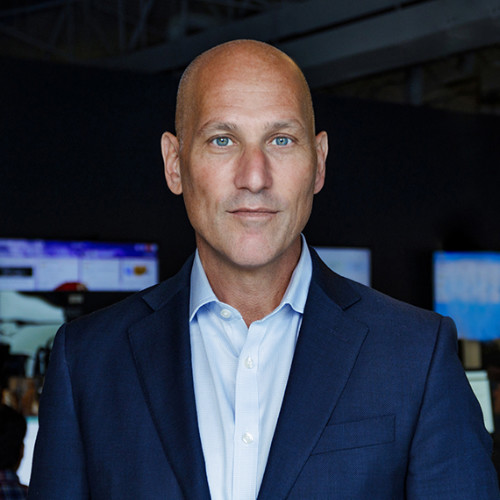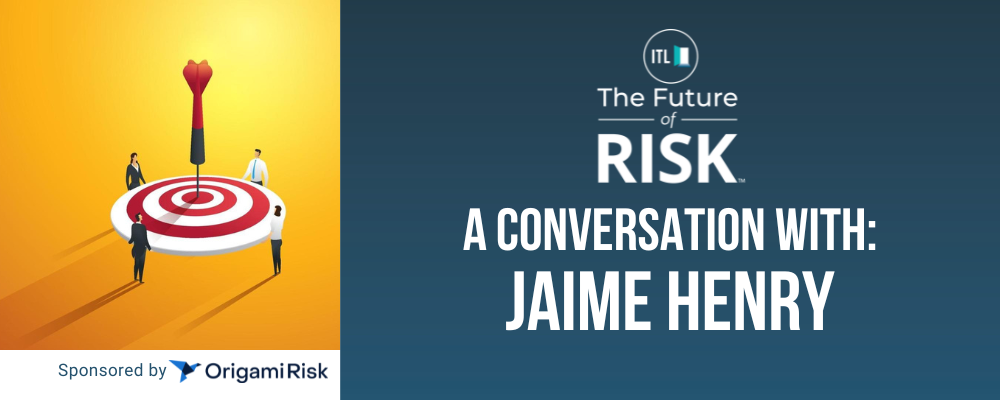 | Andrew Robinson became Skyward Specialty’s second chief executive officer in May 2020 and is a highly experienced and successful global insurance executive, with a 30-year-plus track record of growth, financial improvement and strategic and operational leadership. His experience includes 10 years with Hanover Insurance Group, where he was president of specialty insurance, executive vice president of corporate development and chief risk officer. Subsequently, at Crawford, he was global chief operating officer and executive vice president. While at Hanover, his responsibilities included all aspects of the company’s U.S. specialty businesses, including profit and loss and strategic and operational oversight. He was also responsible for acquisitions, divestitures, business integration and enterprise risk management for the broader enterprise. Prior to his time at Hanover, he was the managing partner of global insurance at Diamond (now PWC) Consulting and executive in residence and senior adviser at Oak HC/FT. |
Paul Carroll
I have been surprised to see so many managing general agents (MGAs) and excess and surplus (E&S) carriers become rock stars, and I figure you are the perfect person to talk to, given the wave you are riding. Where has all this momentum come from?
Andrew Robinson
First, I will look through the Skyward lens, then I will broaden out. Our strategy is, Rule your niche. We are trying to target parts of the market where we believe we can deliver top quartile returns and build real, defensible positions based on technology and talent while solving problems that are meaningful to that particular part of the market. That is a winning combination.
It is as simple as that. And the more focused you can be, probably the more defensible your position.
We made the distinct decision to stay away from the small commercial market based on the belief that it is a very challenging market and that the big players have an information advantage that is very hard to assail. That decision has been proven right because there are a handful of insurtechs receiving huge investments, and one in particular that has raised over a half-billion dollars, that have failed to come close to the results of the better to best small commercial competitors such as Travelers and Hartford; in a number of cases they are out of business. The only place that is not true, as far as I can tell, is in cyber, and that is because that is a true, digital exposure.
We focused on the middle market because, when you get into very niche areas, the generalist sort of information doesn't apply. You really have to be able to see things specific to your market, and a lot of new data can be incredibly valuable.
I will give you a super great example. Within our A&H business, which is a medical stop-loss business, our focus is on companies with 500 employees or fewer. A big chunk of that is companies that are coming out of the guaranteed cost market and looking to self-insure and stop-loss. Guess what? The data coming out of the major healthcare companies, the Blues and so forth. is near impossible to work with for anybody who is going to self-insure.
So how do you get somebody to self-insure? Well, we are using incredibly interesting information that allows us to assess the risks and provide early indications long before the broker has to do all the heavy data collection for us to be able to finalize the business.
For instance, we are able to see anonymized information about drug use inside the group, like a recent prescription for an anti-nausea medicine. Almost always, anti-nausea medicines are tied to cancer. Yet there was no documentation of cancer treatment provided by the current carrier, a major health insurer. Well, sure enough, an employee’s wife had just started to be treated for breast cancer. As such, before even working with the broker to collect all the data to present a proposal to move the group to a self-insured solution, we were able to better understand the specifics of this situation and construct a solution that formed part of our proposal.
In an important area where the information is so opaque and poor, there was an opportunity to leapfrog, and we took it.
There are lots of opportunities like that, particularly in dislocated, tougher parts of the market. There are creative ways to get data that allows you to do things better than others have done it both from a product standpoint and in terms of fidelity, adverse selection, pricing and delivery of services.
That is the thesis.
Paul Carroll
My experience has been that technology migrates, sometimes from consumer applications up to business applications, but generally down, from big companies to smaller companies. It seems that insurance companies no longer need to be major carriers to have access to a lot of important innovation and that the move to AI may even accelerate that migration. But how are you seeing this playing out?
Andrew Robinson
Let me answer that in a roundabout way, with an example.
We asked our claims leadership and technical team to focus on what factors are most likely to cause social inflation with a claim, and we tested the capabilities we have been building against those of three vendors you know but that we will not name.
We have focused on one thing, the application of large language models on claims notes. We parse the claims notes and identify those claims that are going to contribute the most significant portion to reserve development.
We gave the three vendors access to a historical cohort of information from a period starting more than two years ago (i.e., these claims have fully developed) and asked them to isolate those that over time would drive the greatest reserve development. Simultaneously, we developed our own approach tailored to our business, which proved to deliver double the fidelity of the best guys out there. We could identify 80% of the reserve development, and the next best book could identify 50%. The next two were worse than that. The generalist solutions are simply not as good as what we can do in certain instances.
Now, we are a $1.6 billion business, so we are not an immaterial business at this point, but you can see what is possible without having to be a top 10 carrier.
Paul Carroll
Where do you see the MGA trend going from here?
Andrew Robinson
I am not sure. You cannot say how the book will end when you are only three chapters in.
My view of the MGA market is that, first and foremost, it is no different than what's happened in retail and wholesale, which is that private equity has gotten its claws into it, and there's a financial arbitrage model that they understand.
And I would say to you that for every five MGAs that are out there, maybe as many as three or four are not great and can be irresponsible even at times like now when the market is generally constructive. Then of the five there are one or two that are as good or better than the better to best players out there.
I will give you an example. We recently had a California education institution, a for-profit management liability account. We provided million-dollar entity limits and sub-limited nearly everything else due to the underlying exposure and the jurisdiction. And we charged $40,000. An MGA wrote a policy that took out all the sub limits and made each coverage part a million dollars, non-aggregating. They took all the exclusions out of the D&O. They charged $10,000. That is crazy. They are going to get pasted if that underwriting repeats.
There is still a lot of hoopla about MGAs, and it is not over yet. But I believe a shakeout is coming.
Paul Carroll
When do you expect it? Two years? Five years?
Andrew Robinson
We are already starting to see it in certain areas. You will see it in commercial auto/trucking in the next two to 10 quarters.
And there are some very good ones out there focused on a peril, an industry area, a line of business or some combination of the three that have real distinctive capabilities.
But there is a lot of junk out there, too.
Paul Carroll
How do you identify an opportunity?
Andrew Robinson
We ask ourselves the following questions:
One, can we deliver top quartile underwriting profitability? Two, is there a clear line of sight for us to build a legitimately defensible position, something with a competitive moat so we can not only be good during good times but during tougher times, as well? And three, can we afford it?
I will give you a great example. We launched a global agriculture segment by focusing on markets where government subsidies are prevalent and reduce the wild swings in prices. That approach lets us write a book that includes Canada and Latin America and Asia rather than writing in one geography. The book is becoming a substantial business that is not correlated with our current business.
That is all on the back of some basic notions. That idea was two years in the making until we found the right person to lead it, because we did not know a lot about the area. And we found the right person: James Tran.
Paul Carroll
One final thing: If I am a customer working with you and other providers of niche solutions, is my life getting more complicated because I am having to knit all these solutions together rather than having a single carrier do it for me?
Andrew Robinson
Great question.
I think it gets easier. Look at a typical Skyward construction account. One of the uncommon things we do is focus on key risk transfer contractual elements between the general contractor and subcontractors (and we insure both), such as additional insureds, waiver of subrogation, hold harmless and indemnification – these elements can materially change the risk profile of an account. Today, we deliver state-specific contract reviews for our construction clients. As we are learning how this is being used, our intent is to make available such reviews on demand via our broker portal chatbot, allowing the organization to take greater control of a key feature of risk management.
Now, do our construction clients have 10 other risk management things to address? Sure. They have to worry about employee safety, controlling the job site and so forth.
But if you have two or three or four of these very-high-impact, easy-to-use solutions being delivered to you, you should have greater information and control at your fingertips. That makes life a lot easier.
Paul Carroll
Thanks, as always, Andrew.








